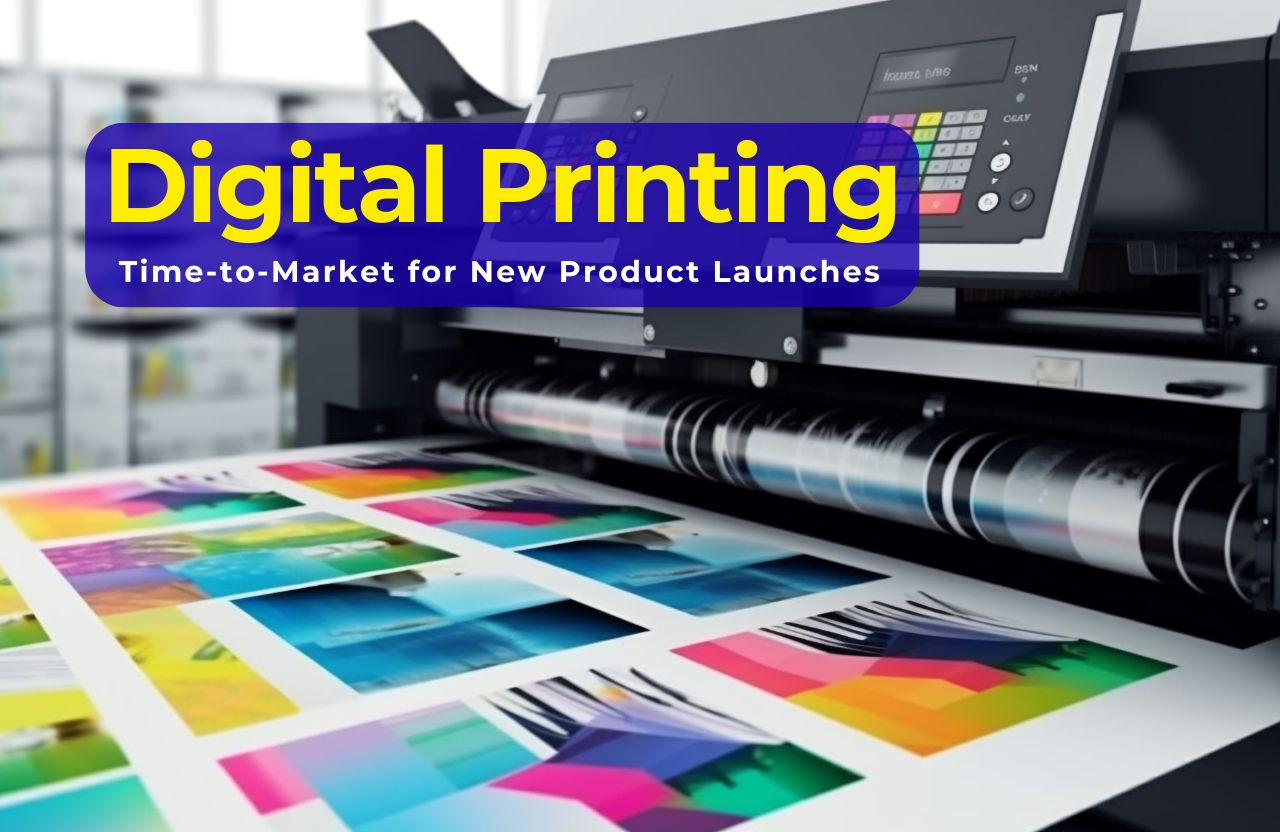In today’s fast-paced business environment, speed is everything—especially when launching a new product. Whether you’re a startup or a large enterprise, reducing time-to-market can mean the difference between a successful launch and a missed opportunity. Among the various technologies aiding this race against time, digital printing has emerged as a game-changer. This innovative method of printing is not only faster but also more adaptable, making it an indispensable tool in accelerating product development cycles.
This blog explores how digital printing reduces time-to-market for new product launches, examining its practical applications, advantages over traditional printing, and the broader impact on business strategy. It also highlights real-world data and trends that underscore its growing relevance.
Understanding Time-to-Market and Why It Matters
Time-to-market (TTM) is the period it takes from the conception of a product idea to its availability on the shelf or online. A shorter TTM enables businesses to:
- Gain first-mover advantage
- Capitalize on seasonal trends
- Meet evolving consumer demands more swiftly
- Reduce development costs
- Stay ahead of competitors
In industries like FMCG, fashion, health, electronics, and even niche markets, rapid TTM is essential for staying relevant.
What Is Digital Printing?
Digital printing refers to methods of printing from a digital-based image directly onto various media. Unlike traditional printing that involves multiple steps such as plate creation and setup, digital printing simplifies the process by removing much of the manual setup. This makes it significantly faster and more flexible, especially for small batch production and customized designs.
Key Ways Digital Printing Accelerates Time-to-Market
1. Shorter Production Setup Time
One of the primary ways digital printing speeds up TTM is through its minimal setup requirements. Traditional methods often involve preparing plates and mechanical configurations, which can take days or even weeks. In contrast, digital printing is virtually plug-and-play. Once the design is finalized, it can go directly to print.
This benefit is crucial during the prototype phase of product development, where iterations are common. A new packaging design or label doesn’t need to wait for a new mold or setup—it can be printed immediately.
Stat Insight: A study showed that digital printing reduced setup times by up to 90% compared to offset printing processes. This means what took days can now take hours.
2. Rapid Prototyping and Testing
Before a product hits the market, it must undergo numerous tests and validations, especially when packaging plays a key role in the consumer experience. Digital printing enables brands to produce multiple design prototypes quickly, without needing to commit to high production volumes.
This encourages a faster decision-making process. Marketers, designers, and product managers can experiment with different color schemes, messaging, and materials in real-time.
3. Cost-Effective Short Runs
Launching a new product often means limited initial runs to test the market. Traditional printing methods become cost-prohibitive when producing low volumes. Digital printing, on the other hand, is economically viable for short print runs, allowing businesses to manufacture only what is needed.
This reduces lead times significantly, especially for seasonal or regional products. By printing only small batches, businesses also avoid inventory buildup and waste, making their operations more agile and eco-friendly.
4. On-Demand Production
On-demand production is the future of lean business. Digital printing supports this model by allowing companies to print exactly what they need when they need it, without waiting for large batch completion. This flexibility helps businesses align better with agile manufacturing models.
It also enables last-minute design changes, urgent rebranding, or compliance updates without disrupting the entire supply chain.
5. Localized and Personalized Marketing
Modern consumers are drawn to personalization. Digital printing makes it easier to create localized packaging, limited-edition designs, and personalized labels, which can be produced faster than ever before.
For new product launches, this can create a more intimate connection with target audiences and enhance engagement. Customization no longer adds weeks to timelines—it can now be executed within days.
Stat Insight: According to a consumer packaging study, products with personalized packaging saw a 28% higher consumer engagement rate. Digital printing enables this at scale with fast turnaround times.
6. Efficient Supply Chain Integration
Traditional print production often delays the product-to-shelf cycle due to the logistical complexities of transporting large volumes of printed packaging or materials. With digital printing, it becomes possible to print closer to the point of distribution, reducing shipping time and costs.
Some companies even integrate digital printers within manufacturing facilities, allowing synchronized production of goods and packaging. This form of just-in-time printing aligns perfectly with supply chain efficiencies and faster delivery to market.
7. Faster Regulatory Compliance
Many industries such as pharmaceuticals, food, and electronics must comply with strict packaging and labeling regulations. Any change in regulation could lead to delays if a traditional print setup is used. Digital printing makes it easier to update compliance information quickly, without the need for expensive retooling or long wait times.
Being able to pivot packaging information swiftly means products can still launch on schedule, or even ahead of competitors, following new legal changes.
8. Real-Time Market Testing and Feedback Loops
Digital printing enables brands to test multiple product versions simultaneously in different markets. For example, three different package designs can be launched in three separate regions, and sales data can quickly indicate which performs better. The winning design can then be mass-produced almost immediately.
This real-time feedback loop helps brands make informed decisions rapidly and adjust marketing strategies or visual branding accordingly, thereby avoiding costly post-launch corrections.
Broader Impact on Business Strategy
Reducing time-to-market isn’t just about operational efficiency—it’s about strategic agility. Companies that leverage digital printing are not only able to launch products faster but can also react to changes in consumer behavior, supply chain disruptions, or competitor activity in near real-time.
From a branding perspective, the ability to refresh packaging and messaging regularly helps maintain consumer interest and loyalty. This is especially vital in saturated markets where visual appeal and speed-to-shelf can make or break a new product.
Industry Trends Supporting Digital Printing Adoption
Digital printing is no longer a niche technology—it is rapidly becoming mainstream. The global demand for digital printing in packaging, for instance, is expected to grow at a compound annual growth rate (CAGR) of over 6% over the next five years, driven by increasing demand for agility, personalization, and sustainability.
Companies adopting digital printing are reporting:
- 30–50% shorter lead times
- Reduced production waste by 20–40%
- Improved customer satisfaction and product visibility
These statistics reveal how digital printing is no longer just an option but a necessity in a hyper-competitive, fast-moving consumer landscape.
Conclusion
Reducing time-to-market has become a critical component of successful product launches, and digital printing is at the forefront of this transformation. From eliminating setup delays and enabling fast prototyping to supporting personalized marketing and on-demand production, this technology offers a wide array of benefits.
Businesses that embrace digital printing can move faster, test smarter, and launch more effectively. In an era where agility, speed, and customer experience define market winners, digital printing is not just a tool—it’s a strategic enabler.If you’re preparing for your next product launch, it’s time to reconsider how your printing process contributes to—or hinders—your go-to-market timeline. Because in the world of modern business, speed isn’t just an advantage; it’s a necessity.













